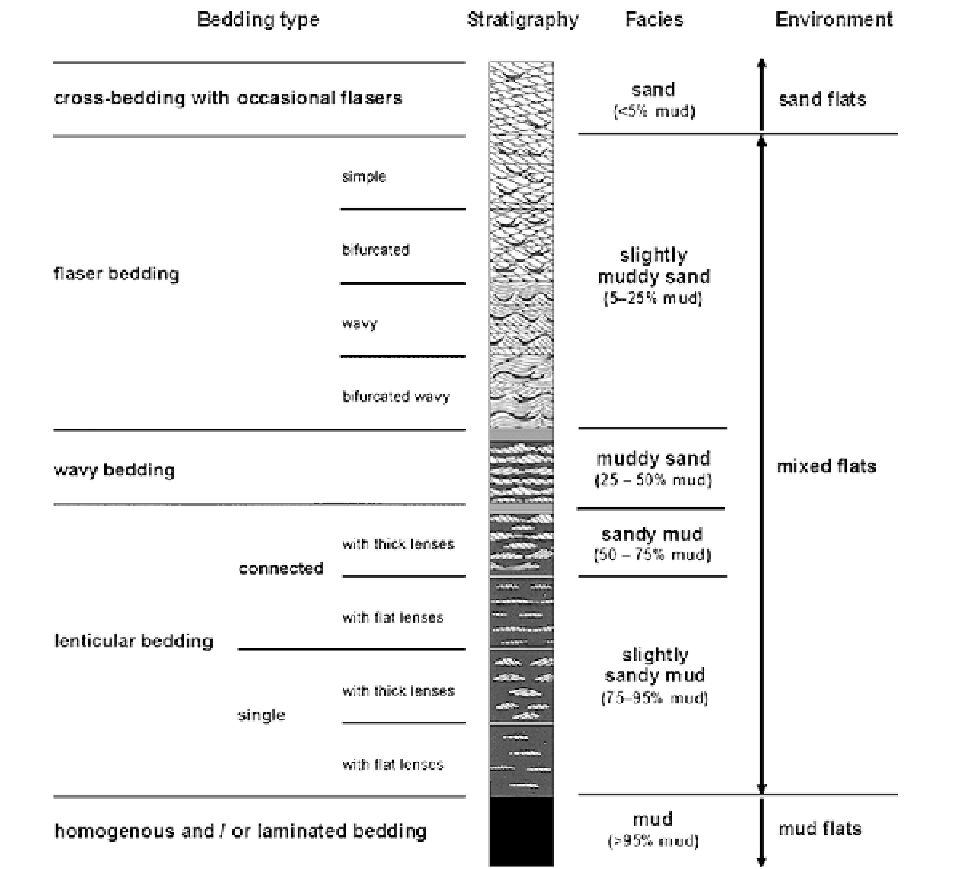Geology Reference
In-Depth Information
Fig. 10.25
Synthetic section in which successive sedimentary
facies occurring between the low-tide and the high-tide level of
intertidal flats (without tidal creeks and bioturbation) have been
vertically stacked in an idealized transgressive facies model
(Modified after Reineck and Wunderlich
1968
; cf. also Flemming
2003a
)
instead truncated by an erosional surface that is
followed by an 80-cm thick sequence of alternating
sand and shell beds, the latter being partly graded
inversely. In the course of transgression and accretion,
the former mudflat at the core site was evidently
crossed a number of times by a migrating intertidal
creek that reworked and destroyed any lenticular and
wavy bedding that may have existed, leaving behind
the reworked sand and shells in the form of stacked lag
deposits. Above the channel deposits, the sequence
continues with sparsely interspersed flaser beds and
more prominently displayed cross-bedded sand of
mostly wave-generated origin, alternating with thin
mud layers typical of muddy and slightly muddy sand
flats. Toward the top, the sequence grades into exposed
sand flats. Significantly, bioturbation is only preserved
in the uppermost layer.
As outlined above, the depositional sequence pre-
served in the core can be rationally explained on the
basis of the idealized model, part of the expected

